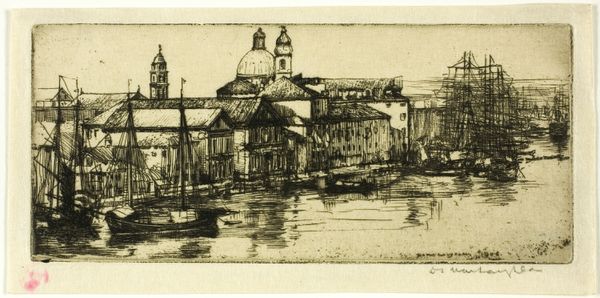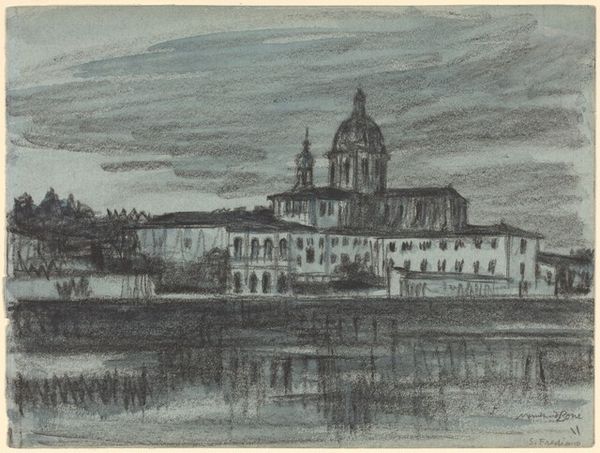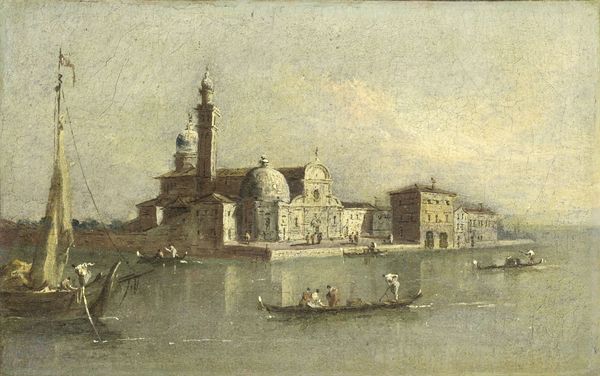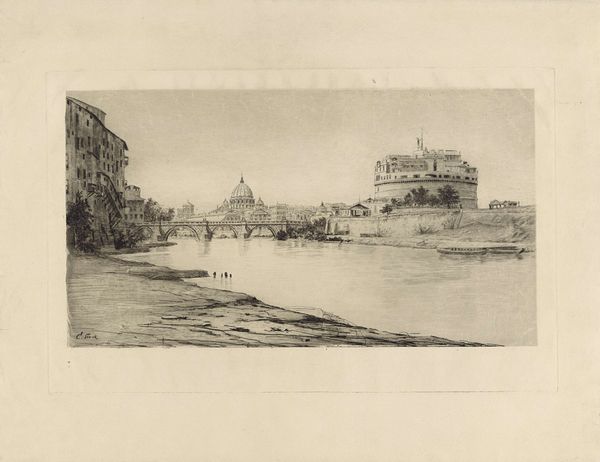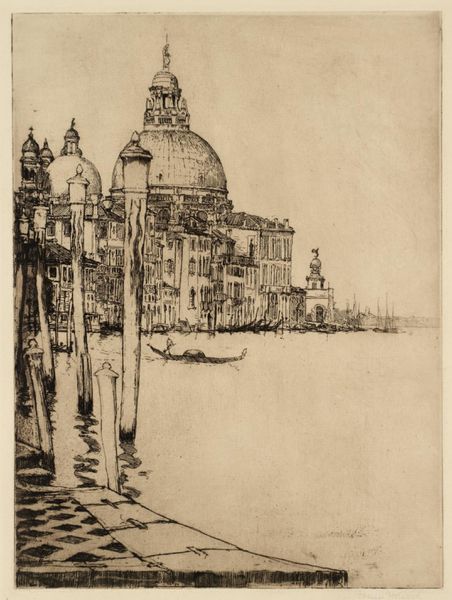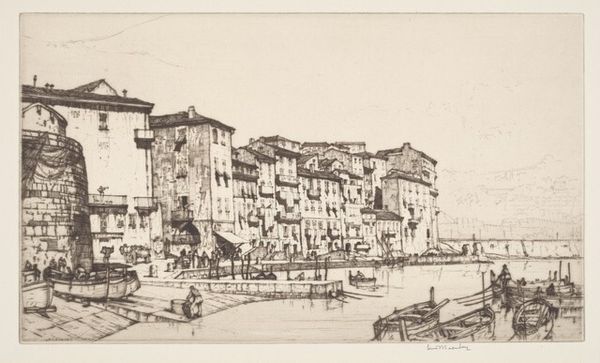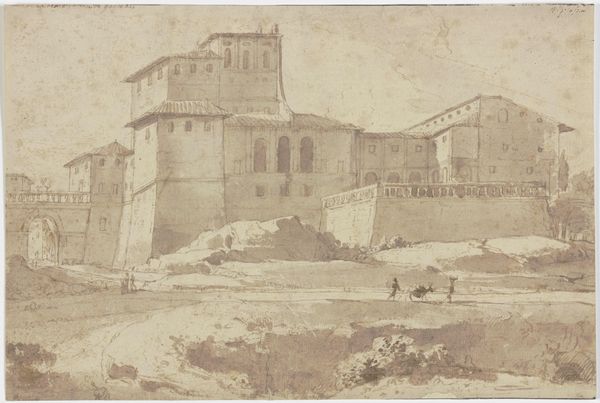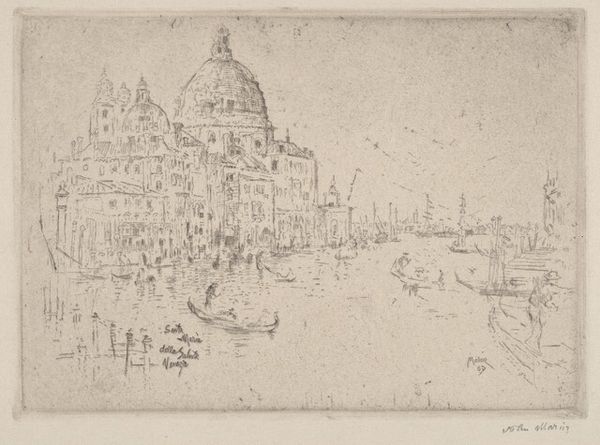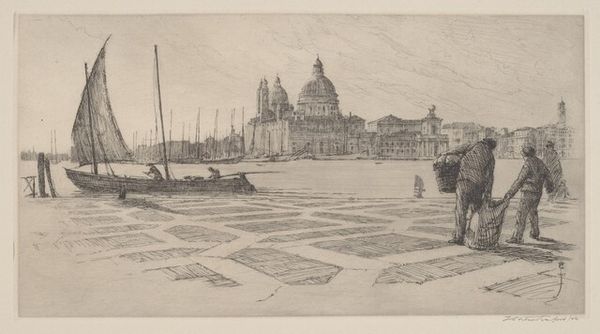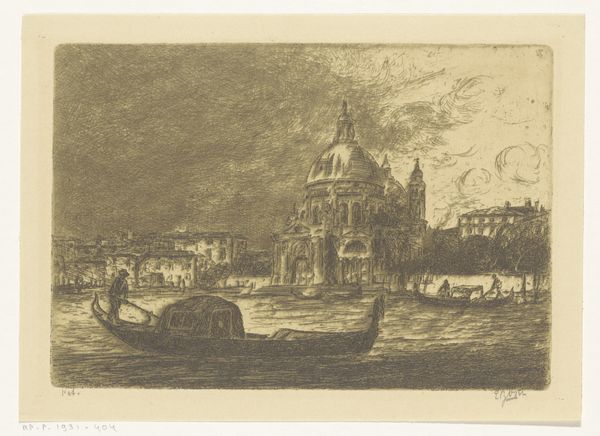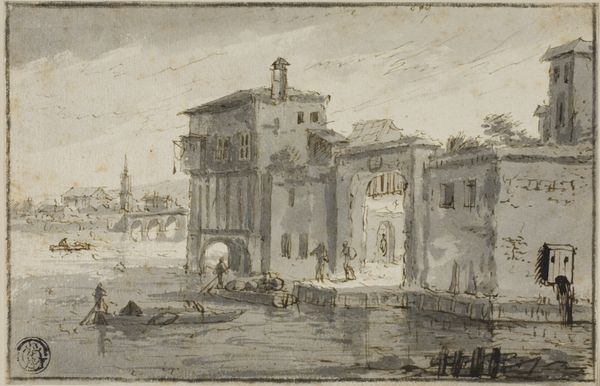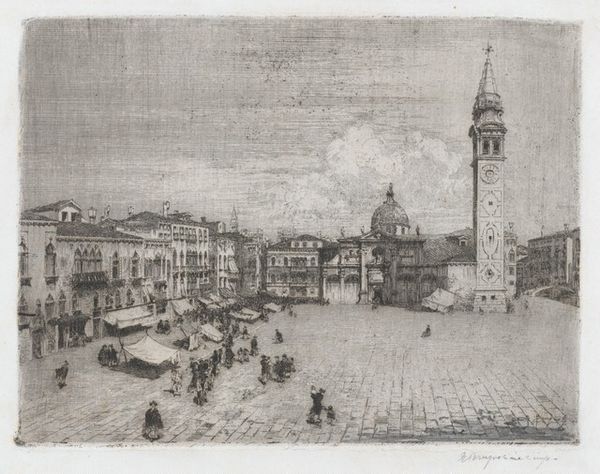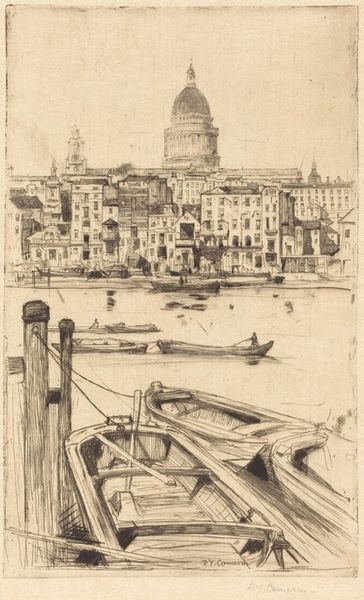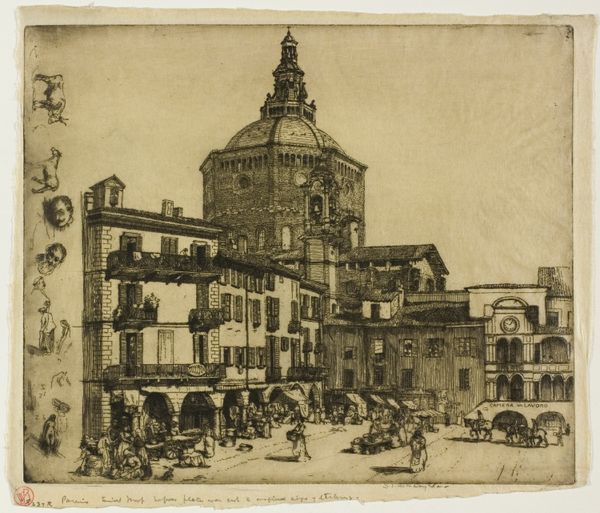
print, etching, architecture
# print
#
etching
#
landscape
#
cityscape
#
architecture
Copyright: National Gallery of Art: CC0 1.0
Curator: This is Muirhead Bone's 1915 etching, "San Frediano in Cestello, Florence," a city landscape showcasing the iconic church. What strikes you first? Editor: The overwhelming feeling of stillness, really. Despite the implied movement of water and human figures, the print seems almost frozen in time, heavy with the weight of history embedded in the architecture itself. Curator: It’s interesting you say that. Bone was very interested in capturing the weight and the materiality of architecture and the social fabric it represents. It’s not just a pretty picture, but an examination of how Florence embodies political power structures. Consider the strategic placement of religious architecture within the cityscape. Editor: And it makes me consider Bone's perspective, being a Scottish artist capturing a very particular Italian view. Is it reverent? Appropriative? How does his outsider status affect the work? The depiction almost feels like an imagined landscape—or at least, it omits some of the complexities of Florence at that moment. The people present seem incidental. Curator: He's more interested in documenting than editorializing. His war art proves that. Consider his prints documenting WWI; they serve as crucial social records of industrial conflict. Here he shows buildings in peacetime with great skill and precision using hatching and cross-hatching that give the church presence and density. He presents details clearly and almost clinically, perhaps. Editor: Right, and by extension, we must be critically aware of what that clinical detachment obscures or even protects. Perhaps in his dedication to form, we lose out on a richer interrogation of urban inequality, or labor conditions, and a whole slew of social realities. It feels very aligned with the aesthetic values of early 20th century, and so our reading has to reflect that! Curator: Well said. Even as an homage to a physical place, any artwork opens up complex cultural questions. Editor: Yes, every etched line represents choices and a perspective worth understanding deeply!
Comments
No comments
Be the first to comment and join the conversation on the ultimate creative platform.
